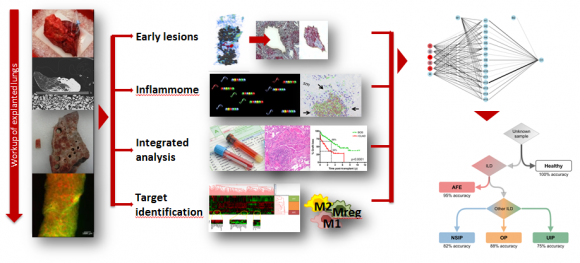Identifying molecular motifs of fibrosing pulmonary diseases using Laser Microdissection
Interstitial lung disease (ILD) is an umbrella for a multitude of different diseases, such as idiopathic pulmonary fibrosis (IPF), characterized by a typical usual interstitial pneumonia (UIP) pattern, nonspecific interstitial pneumonia (NSIP), organizing pneumonia (OP) and alveolar fibroelastosis (AFE).
For diagnosis, currently employed morphological criteria are not reliably discriminating different ILDs.

Therefore, Danny Jonigk and co-authors sought to characterize these patterns on a molecular level in order to identify gene expression profiles that discriminate lung injury patterns with very high confidence.
Crucial for this analysis was laser microdissection of disease specific compartments. This allowed to correlate distinct morphologies with gene expression patterns.
"Using laser microdissection, we can morphologically select and precisely isolate tissue areas from lung parenchyma which show very characteristic changes of IPF/UIP, NSIP, OP and AFE. Thus, we obtain clean and highly conclusive gene expression data for the different disease patterns," explains Prof. Dr. med. Danny Jonigk (FRCPath).
In this study, the authors identified a set of 24 genes which are significantly regulated comparing the pulmonary injury patterns.
Danny Jonigk emphasizes the importance of this work: "We have demonstrated that molecular discrimination of ILDs is feasible and very accurate. Now, we are working on the translation of our predictive markers from bench to bedside by using non-invasive methods for patient sample acquisition, such as bronchoalveolar lavage."
To read the full publication, please follow this link: https://onlinelibrary.wiley.com/doi/abs/10.1002/cjp2.141
Jonigk D, Stark H, Braubach P, Neubert L, Shin H, Izykowski N, et al. Morphological and molecular motifs of fibrosing pulmonary injury patterns. J Pathol Clin Res (2019) doi:10.1002/cjp2.141